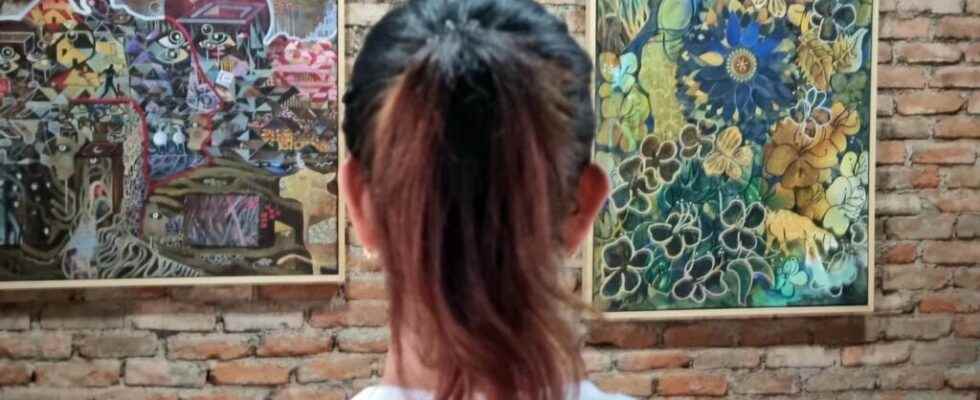In India, the Kerala Contemporary Art Biennale is making a comeback after the Covid. The largest festival of its kind in Asia, it exhibits 90 artists from 24 countries in 14 different historic buildings until April. Creators and curious people from all over the world flock to Fort Cochin, which has become the center of contemporary art and a space of freedom of expression unique in India.
From our correspondent in India, Como Bastin
Under the wooden roofs of Aspinwall House, a former spice exchange, a painting stretches ten meters. We see women there who engender animals, who engender fruits, who engender organisms…
” I studied biology and I am inspired by the connection between emotions and the anatomy of humans, fauna and flora. “. At the crossroads between art and science, the cyclical frescoes by Anju Acharya, a 29-year-old Indian, explore the female body and organs, still taboo in India.
” I saw my body change during my pregnancy, continues the artist. I identified with other animals that go through the same cycles. I’m married to a Westerner and people wondered why my baby had pale skin. All of this influenced my work. »
freedom at work
In two weeks, the biennial saw 240,000 visitors. From painting to sculpture to video installations and virtual reality, there is something for everyone. With an entry price of one euro for students, Bose Krishnamachari, curator, wants to break with the elitism associated with contemporary art.
” Indians don’t have so many opportunities to get acquainted with the history of art, he said. From the start, we thought of this biennial as an open museum, where everyone can develop their sensitivity. It therefore attracts great art pundits such as local craftsmen and also more and more young people. »
Many artists today choose to settle in Cochin, where exhibition spaces are multiplying among the port and colonial remains. In this cosmopolitan, millennial city of commerce, they benefit from a freedom of tone in the face of religious fundamentalists who no longer hesitate to attack works deemed “anti-Hindu”.
